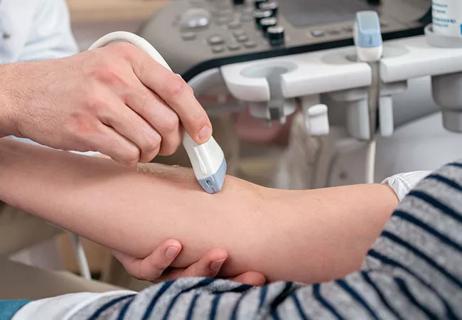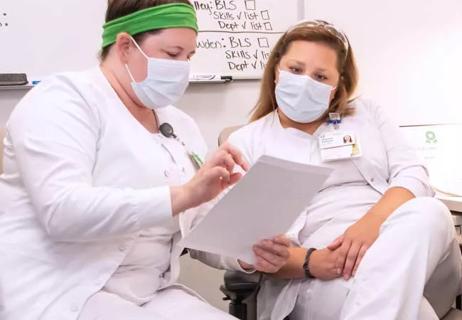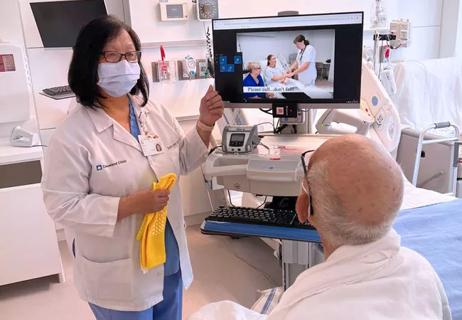All nurses care for patients with pain. But just how knowledgeable are most nurses about pain management? That question compelled Esther Bernhofer, PhD, RN-BC, CPE to develop an instrument to measure pain management knowledge in post-licensure nurses.
Cleveland Clinic is a non-profit academic medical center. Advertising on our site helps support our mission. We do not endorse non-Cleveland Clinic products or services. Policy
“There’s not very much in the way of pain management education in nursing schools, so there’s subsequently not much testing of pain knowledge,” says Dr. Bernhofer, a nurse scientist in the Office of Nursing Research and Innovation at Cleveland Clinic. “After receiving a college degree, nurses learn about pain management and develop attitudes about patients’ pain from mentors, peers and patients when on the job.”
Pain management knowledge and attitude surveys have been utilized since the late 1980s, but a validated test has not been available that measures post-licensure nurses’ knowledge of the mechanisms, treatments and core competencies of pain management. Dr. Bernhofer developed the Clinical Pain Knowledge Test (CPKT) with Barbara St. Marie, PhD, RN-BC, ANP, GNP, from the University of Iowa College of Nursing.
The instrument tests pain management knowledge and can be used before and after implementation of education initiatives and in research. Dr. Bernhofer and Dr. St. Marie initially created 36 multiple choice questions based on findings from the literature, current pain management practices, previous pain management knowledge and attitude surveys for nurses, and pain management practice-test items available from the American Nurses Credentialing Center and the National Council Licensure Examination. Test items are based on four core competency domains of pain management:
After developing the 36-item test, researchers sought the opinions of nine pain management experts to ensure content validity. After reviewing comments from experts, test item revisions were made.
Researchers evaluated test psychometrics by examining findings of 747 nurses with broad clinical experiences at four large Midwestern healthcare systems. Psychometric analysis included:
After eliminating a total of 13 test items, the revised 23-item CPKT was assessed for decision consistency reliability to learn how consistent test answers were for individual test takers. Because the CPKT encompasses so much information, researchers used a cutoff score of 75 percent correct to ascertain test reliability. Among the 747 nurse participants, the reliability score calculated as two standard deviations from the mean CPKT correct score (50.4 percent correct) was 73 percent – near the 75 percent cutoff, which indicated that the test was reliable; it detected consistent decision-making by test takers.
“CPKT results can help unit nurses understand the domains of pain management and areas where they may need more education. Knowledge gained may help educators determine the best educational initiatives needed to meet nurses’ needs,” says Dr. Bernhofer. In addition, assessment of nurses’ pain management knowledge post-initiative implementation may increase team understanding of new opportunities and current successes. Bernhofer also indicated that there is an international need to measure nursing pain education and stated that “several international groups and U.S. hospital nurse leaders have already requested permission to use the CPKT.”
An article on the development of the CPKT was published in the August 2017 issue of Pain Management Nursing. “This is just the beginning of measuring pain management knowledge of nurses and other healthcare providers,” says Dr. Bernhofer. “Barb St. Marie and I plan to continually work on the test over time. We will revise it as necessary as this is a work in progress. Nurses’ knowledge base for pain management is changing, particularly given the opioid crisis. Five years from now, the instrument may no longer be valid. We will continue to evaluate CPKT psychometrics and add or delete test items as needed.”

Study shows ultrasound can be valuable tool for improving patient satisfaction by reducing failed IV insertions

New system uses vital signs to predict need for further intervention

Findings reveal personal and professional factors that influence nurses’ interest in medical research

Nurse scientists bridge divide between bench and bedside

Individual and population factors play a role

Study looks at cardiopulmonary arrest and activation rates

Video education and nurse-led reinforcement help with fall risk awareness

Further research into collaborations may help strengthen nursing science